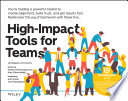

Team dynamics are crucial for the success of any project. High-performing teams exhibit strong collaboration, trust, and communication among members. The book emphasizes the need for teams to understand their dynamics to harness the strengths of each member. It suggests tools and techniques for assessing team dynamics, such as personality assessments and feedback loops, which can help identify areas for improvement. By fostering a positive team environment, organizations can enhance productivity and innovation.
Continue readingCommunication is the backbone of any successful team. The book outlines various communication tools and strategies that can facilitate better information sharing and understanding among team members. Techniques like active listening, regular check-ins, and utilizing collaborative platforms are discussed. It stresses the importance of clarity in communication to avoid misunderstandings and ensure that all team members are aligned with the project's goals and objectives.
Continue readingSetting clear and measurable goals is essential for team success. The book presents frameworks for goal setting, such as SMART (Specific, Measurable, Achievable, Relevant, Time-bound) criteria. It discusses the necessity of aligning individual goals with team and organizational objectives to foster a sense of purpose and direction. This alignment ensures that all team members are working towards a common goal, which can significantly enhance motivation and accountability.
Continue readingThe book delves into various decision-making processes that teams can adopt to enhance effectiveness. It discusses the importance of inclusive decision-making, where all team members have a voice, leading to better outcomes and buy-in from the team. Techniques such as consensus-building and the use of decision matrices are explored, providing teams with structured approaches to tackle complex decisions while minimizing conflicts and promoting collaboration.
Continue readingConflict is inevitable in team settings, but how teams manage conflict can determine their success. The book provides insight into conflict resolution strategies, emphasizing the need for open dialogue and a willingness to understand differing perspectives. It encourages teams to view conflict as an opportunity for growth and innovation rather than a setback. Techniques such as mediation, negotiation, and establishing ground rules for discussions are discussed to equip teams with the tools needed to navigate conflicts effectively.
Continue readingDiversity within teams can lead to greater creativity and innovation. The book highlights the importance of embracing diverse backgrounds, perspectives, and skills within teams. It discusses how diversity can enhance problem-solving and lead to more innovative solutions. The authors provide strategies for creating an inclusive environment where all voices are heard, thus fostering a culture of collaboration that leverages the strengths of a diverse team.
Continue readingThe concept of continuous improvement is central to high-performing teams. The book stresses the importance of regular feedback loops and iterative processes that allow teams to learn from their experiences and adapt accordingly. It discusses various feedback mechanisms, such as retrospectives and performance reviews, that can help teams identify areas for improvement and celebrate successes. By fostering a culture of openness and learning, teams can continuously evolve and enhance their performance.
Continue reading